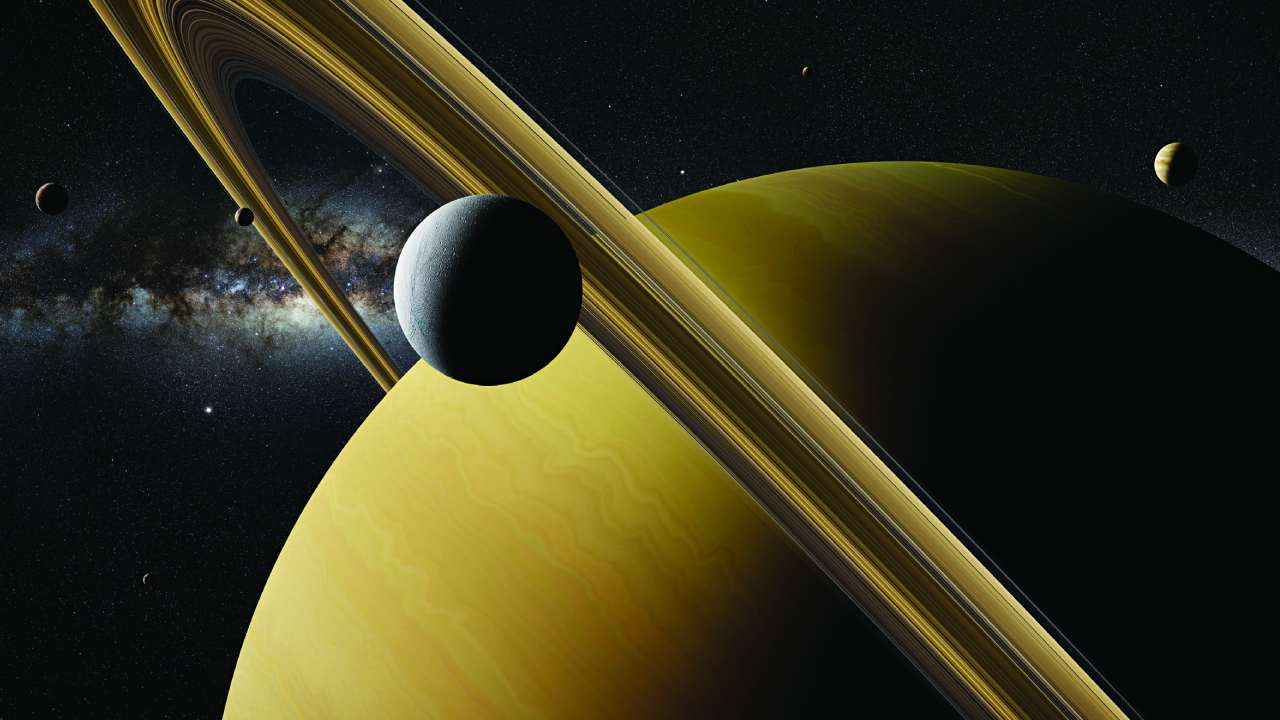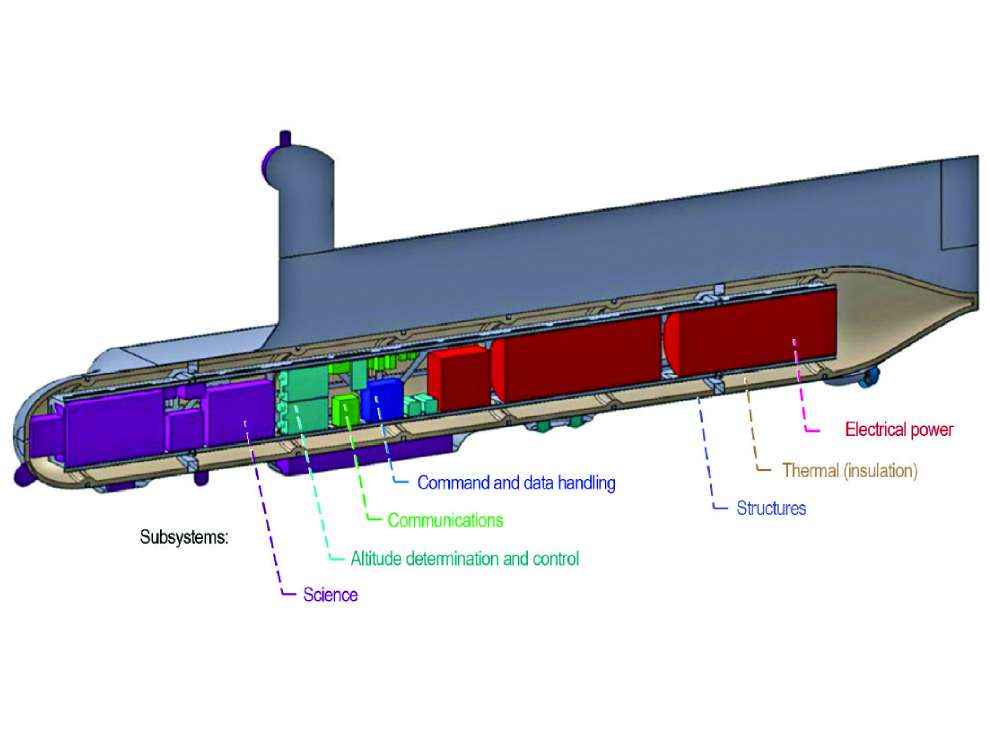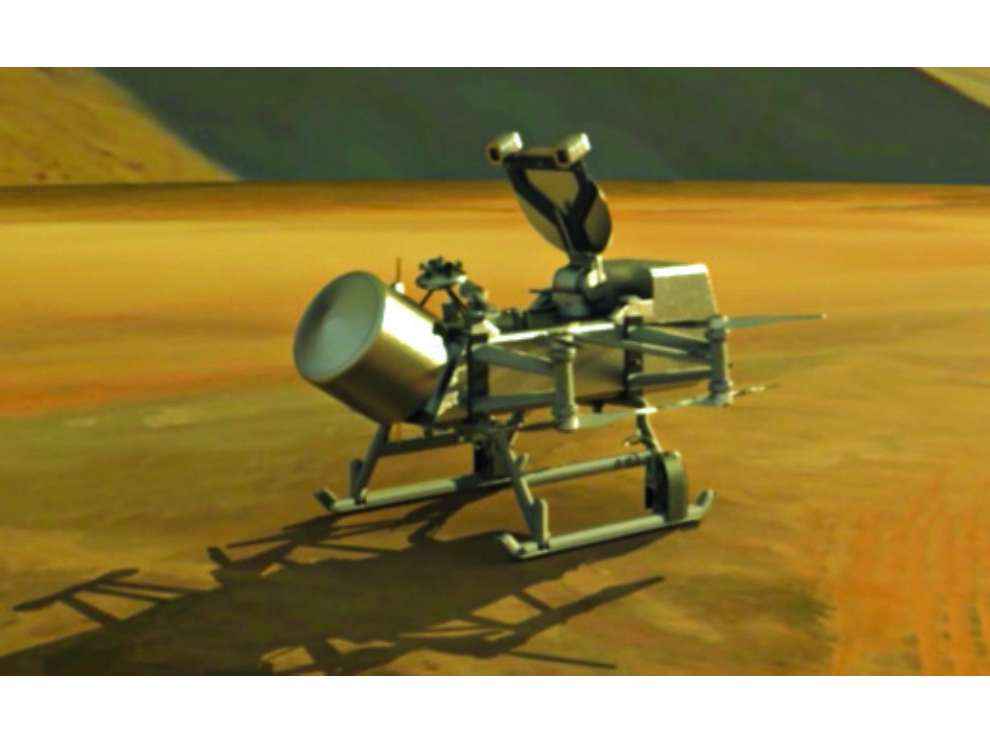Exploring Saturn’s moons

Saturn is romanticized as the “Jewel of the Solar System” and is a spectacular planet indeed with its rings. While the Pioneer and Voyager spacecraft executed flybys of the Saturnian system in the late 1970s and early 1980s, these low resolution images revealed little information about the gas giant and the icy moons that orbit it. The flagship Cassini-Huygens mission, a collaboration between NASA and ESA was the most fruitful and informative explorer of Saturn and its moons. The data gathered by Cassini revealed some surprising things that scientists had no idea about. Enceladus, had water spouts that sprang out of its subsurface ocean. The discovery made scientists change the trajectory of Cassini to better understand these spouts. The finding, along with other measurements indicates that Enceladus has all the ingredients necessary to support life. Titan, another interesting moon has hydrocarbon lakes on the surface, that could provide the basis of an exotic form of biochemistry. It is the only other body in the Solar System with a liquid level as well as a dense atmosphere. Hiding beneath the surface, maybe a subsurface liquid water ocean as well, containing life as we know it on Earth. Cassini discovered that the atmosphere of Titan was teeming with molecules that indicated complex chemistry. The surface may in fact be a laboratory of prebiotic conditions, and may one day help us better understand how life originated on Earth. Cassini also gathered data to indicate that both Dione and Rhea may have subsurface oceans as well. However, the most promising targets for future exploration, especially when it comes to finding life elsewhere in the Solar System, are Enceladus and Titan. We cannot know more about these remote ice moons without sending follow up probes, with the specific intent of discovering any life forms. Scientists simply had no clue about these potential niches for life when Cassini was originally designed. While there have been concepts for future missions to the Saturnian moons, there are none that are scheduled to reach their destinations for the next decade and a half. For a number of reasons, missions to other bodies have been picked over the proposals for follow up missions to Saturn. These include the OSIRIS-REx mission to Asteroid Bennu, the Juno mission to Jupiter, and the New Horizons mission to the outer Solar System. The data gathered by the Cassini mission continues to be analysed, and serves as the basis for research that is expected to continue for decades.
 Survey
SurveyExploring the hydrocarbon seas
The Titan Mare Explorer TiME is a concept proposal that is meant to specifically investigate the discovery of liquid bodies on the surface of Titan. The bodies of hydrocarbon liquids are large enough to support a cycle, similar to the water cycle on Earth. It is believed that despite the distance from the Sun, some hydrocarbons may form clouds that rain methane and ethane down on the surface. Material that gets lifted to the stratosphere may get lost into space.
The primary goal of the TiME mission is to characterise the hydrocarbon liquid bodies on the surface of Titan, find out the atmospheric conditions just above the surface, investigate the depth of the lakes or seas, and find out any seasonal variations. The instruments on board will also be able to take measurements on the exact composition of the liquid bodies, and record any ongoing chemical or biochemical processes.
The targets for exploration are the Ligeia Mare and the Kraken Mare, two of the largest lakes imaged by Cassini on Titan. Out of the two, the Ligeia Mare is better understood, but is the smaller one. Scientists associated with NASA are also conducting studies on an autonomous submarine exploration of the Kraken Mare. These studies would require better modelling and understanding of how submarines would behave and move in the hydrocarbon lakes of Titan, and are largely based on scrutiny of the data gathered by Cassini.
Taking to the alien skies
When planning for a mission on the surface of another body in the Solar System, one of the constraints is the range of the rover. Titan has an atmosphere denser than the Earth, as well as a lower gravity and a NASA proposal taking advantage of these facts is a drone called Dragonfly. The Dragonfly mission will be able to cover a number of sites of interest by flying between them. The first site it will visit is near the equator of the moon, known as the Shang-Ri-La dune fields. These sand dunes are similar to the dunes in Namibia. It will then make a series of increasingly longer flights, landing each time to sample the surface and investigate the surroundings. The Dragonfly will fly only once during every day on Titan, which lasts 16 Earth days. Finally, it will make its way to the Selk crater, where liquid water is believed to have existed in the past. The site is rich in chemistry, and the conditions might be similar to a very primordial Earth. By the end of the 2.7 year long mission, the Dragonfly will have traversed a distance of 175 kilometers, which is more than double the distance that all Mars rovers together have covered. The atmospheric conditions in the region will be calm, and suitable for flying the drone, something that the scientists know because of the data gathered by Cassini. On the ground, Titan will study the surroundings and even take seismic readings. While flying, it will capture aerial imagery and study the characteristics of the atmosphere.
Searching for life
Enceladus Life Finder (ELF) was a proposed mission to use an array of solar panels to capture energy from the distant Sun, and fly repeatedly through the plumes on Enceladus to look for signs of organic life. Another mission proposal, known as Journey to Enceladus and Titan (JET), was to combine high resolution mapping of the surface of the two moons, as well as high resolution spectroscopy to understand the geological processes that shaped the two worlds, as well as their astrobiological potential, or suitability for life. Both ELF and JET were conceptualised as follow up missions to answer questions raised by the Cassini spacecraft. While ELF and JET have been shelved, the studies for the two mission have been used in a new mission concept that combines the goals of the two, and is even more ambitious. This mission, is known as Explorer of Enceladus and Titan (E2T). One of the major constraints for European researchers is that they have to depend on solar panels to power up the space probes. The Curiosity rover and the planned Dragonfly mission both use a Multi-Mission Radioisotope Thermoelectric Generator (MMRTG) for power. US laws prevent NASA from allowing foreign spacecraft from using the power source. Which is why the E2T team has to design their spacecraft with large solar arrays, that open up to 160 square meters. While the spacecraft will map the surface and terrain of both Enceladus and Titan, it will also be able to directly sample material from the plumes erupting from Enceladus, and the organic molecules escaping from the uppermost regions of Titan’s dense atmosphere. The spacecraft will be able to directly find out if there is life on Enceladus or Titan, something that the instruments on board Cassini were unable to do.
Aditya Madanapalle
Aditya Madanapalle, has studied journalism, multimedia technologies and ancient runes, used to make the covermount DVDs when they were still a thing, but now focuses on the science stories and features. View Full Profile

